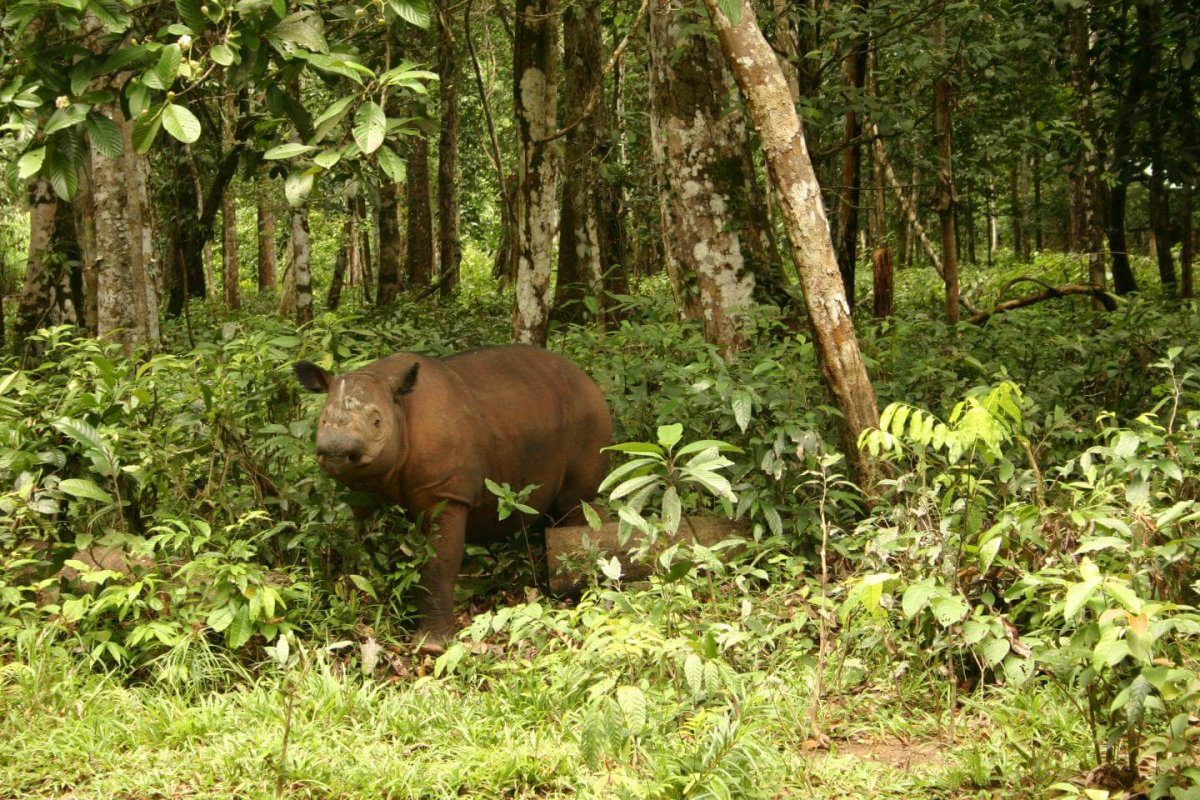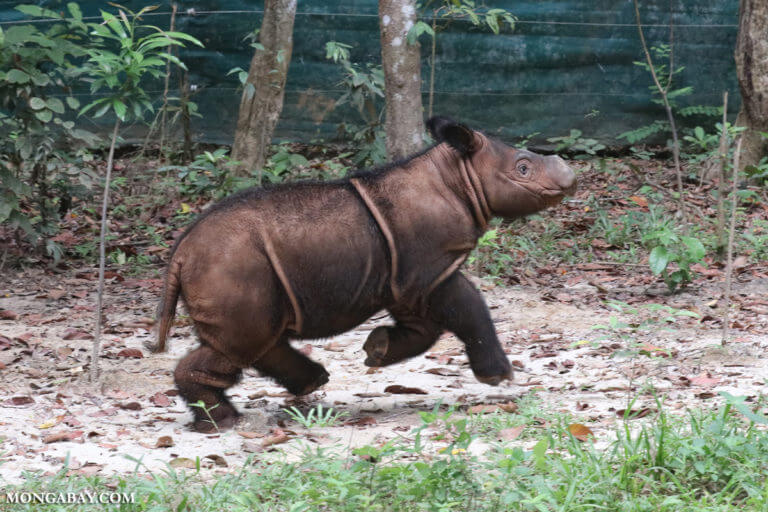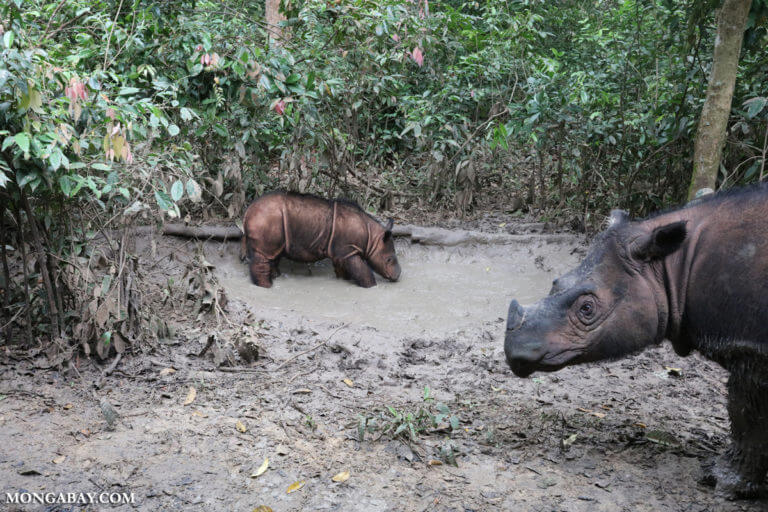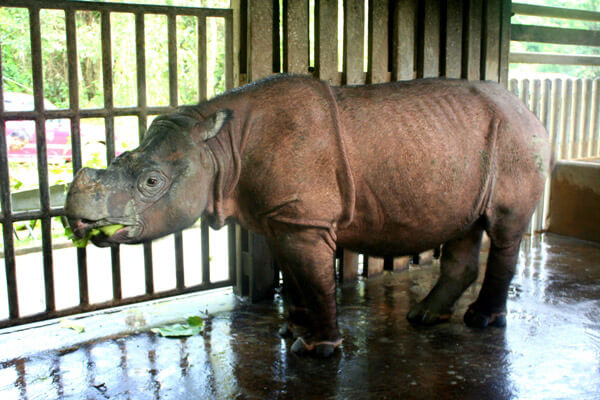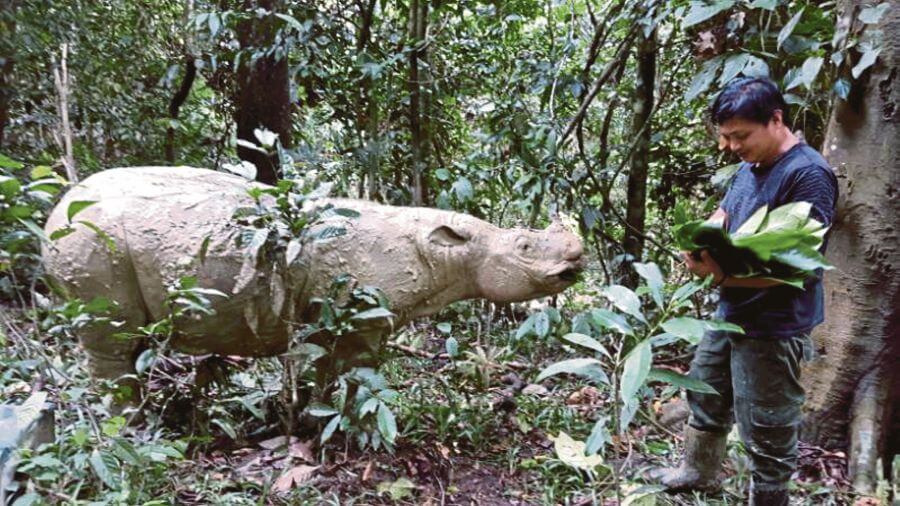SAN DIEGO – Victoria, a southern white rhino at the San Diego Zoo Safari Park, is pregnant. It’s an event of vital importance for a program to bring back her nearly extinct kin, the northern white rhino.
The developing baby is also a southern white rhino, conceived on March 22 through artificial insemination. The pregnancy is a dress rehearsal for the ultimate goal of creating more northern white rhinos, grown from embryos made from stem cells.
The lengthy rhino gestation period means the baby isn’t due until the summer of 2019. A failure would mean more work needs to be done, or that the female is infertile.
Only two northern white rhinos are alive today, both females. The last male, Sudan, died in March in a Kenya preserve. Another white rhino, Nola, died in November 2015 at the Safari Park. She was one of four alive at that time.
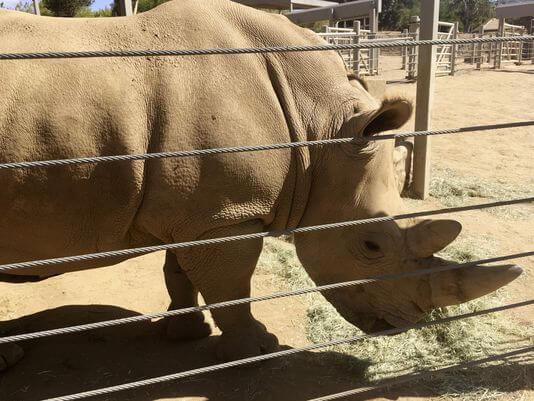
Victoria and five other female southern white rhinos at the Safari Park’s Nikita Khan Rhino Rescue Center have been conditioned for years to willingly accept the most intimate handling, such as ultrasound examination of their reproductive tracts.
Jeanne Loring, a stem cell scientist at The Scripps Research Institute, has worked on this project with the zoo for years. She expressed delight in the news.
“That’s awesome,” Loring said from Germany. “It’s an amazing feat. This is a milestone.”
Much of the rhino reproductive system hasn’t been studied before, she said. So the zoo and allied researchers like Loring have had to invent the technology as they go along.
The project’s roots go back decades to a dream inspired by Oliver Ryder, a geneticist at San Diego Zoo Global, the zoo’s conservation arm.
Ryder suggested deep-freezing tissue from endangered animals, in the hope that future technology could recreate whole animals from these cells. He established a cryobanked collection of tissue from these animals, known as the “Frozen Zoo.”
The technology to put these cells to use finally arrived in 2007. Japanese scientist Shinya Yamanaka demonstrated that adult mammalian cells can be turned into artificial embryonic stem cells. He shared a Nobel Prize in 2012 for his discovery.
Loring is leading a separate project to use the cells to treat Parkinson’s disease. These induced pluripotent stem cells, as they are called, are to be created from the patients themselves. They will be matured into brain cells of the type destroyed in Parkinson’s, then implanted into the patient’s brains.
The rhino project is even more complicated. Thawed cryopreserved tissue will be converted into the artificial embryonic stem cells, then matured into egg and sperm cells. These will be united by in vitro fertilization to create an embryo. This is what will be implanted into the southern white rhino surrogate mothers.
Loring and Ryder are co-authors of a recent study describing how stem cells were produced from four northern white rhinos with a method they say is superior. Unlike earlier methods, it doesn’t use viruses to deliver genes that help convert the cells. So the cells created have a healthier genetic profile.
The study, which has yet to be published, can be found at j.mp/rhinostem.
The Safari Park says the work may be applicable for other rhino species, including the critically endangered Sumatran and Javan rhinos.
Distributed by Tribune Content Agency
This article appeared in VC Star on 18 May 2018. Read the original online article here.
